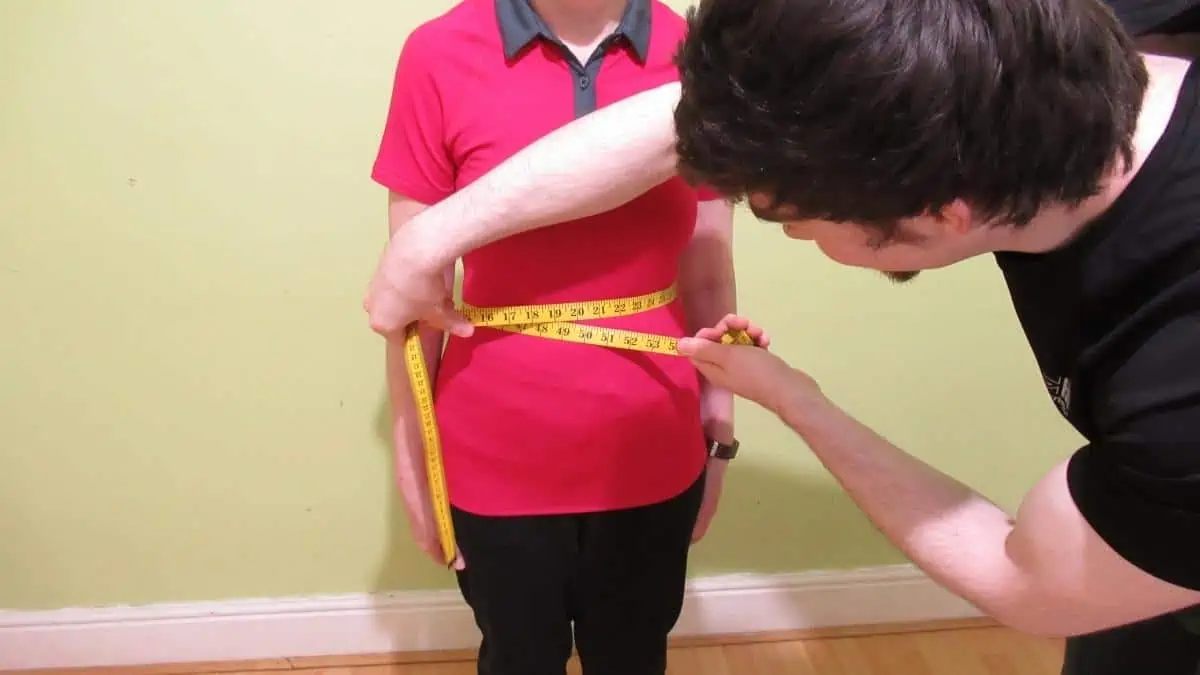If you want to learn the average waist size for women and men of various ages, we have the guide for you.
Using the latest anthropometric data and scientific research, we’ll also explain why the normal waist size isn’t necessarily the ideal waist size for the vast majority of people.
Additionally, you’ll learn how to measure your waist circumference accurately (even if you don’t have a tape measure) so that you can see how your waistline stacks up.
Related
- Average male height
- Average height for women
- Average BMI for women
- Average hip circumference
- Average thigh circumference
- Average shoulder circumference
- Average calf circumference
- Average bicep circumference
- Average forearm circumference
- Average wrist circumference
- Average neck size
- Average butt size
- Average men’s chest size
What is the average waist size for women?
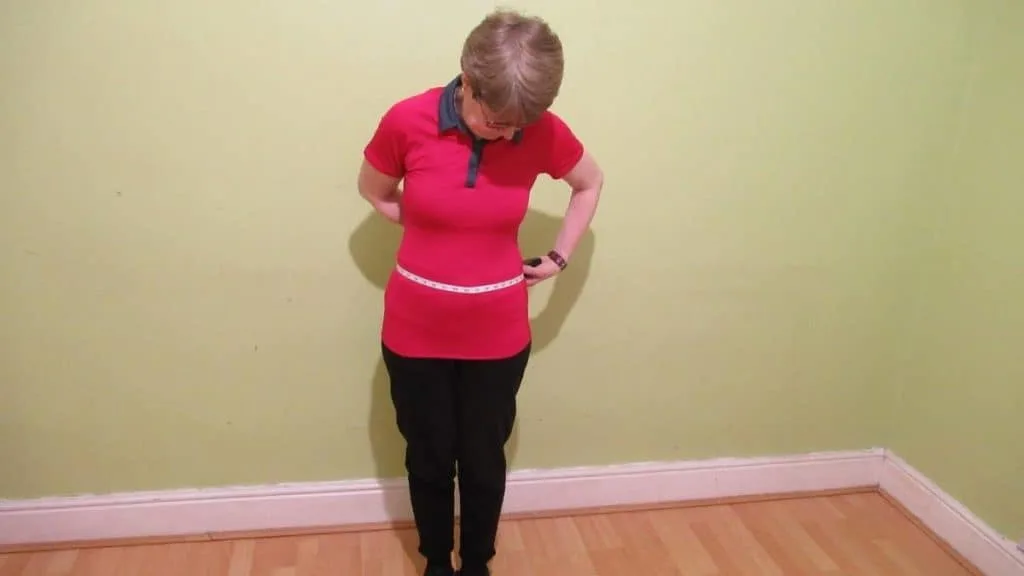
According to a January 2021 Vital and Health Statisticsreport published by the National Center for Health Statistics, the average waist size for women of all ages is 38.7 inches or 98.4 cm. This is based on a sample size of 5,065 female participants. [1]
As one might expect, the average female waist size increases and decreases depending on the age of the participant. Younger women, for example, typically have smaller waist sizes than older women.
Females aged 20-29 have a 36.3-inch waist on average, whereas women aged 30-39 normally have a 38.3-inch waist—a gain of two inches before middle age is reached.
The average woman will gain yet another inch around her waistline as she reaches the 40-49 age bracket (39.2 inches is a standard waist size for this female age group). However, this only increases by 0.1 inches—to 39.3 inches—as a woman enters her fiftieth year.
The average female waist circumference peaks at 40 inches between the ages of 60 and 79 and then decreases to 38.7 inches as a woman reaches her 80s.
What is the average waist size for a teenage girl?

The average girl’s waist size increases in measurement as she progresses through her teenage years and goes through puberty. So here are the average waist sizes for teenage girls aged 13-19.
The average waist size for a 13-year-old girl is 30.9 inches, whereas the average waist circumference for a 14-year-old girl is 31.7 inches. The normal waist measurement for a 15-year-old girl is also typically around 31.7 inches.
The average waist measurement for a 16-year-old girl is 32.4 inches. This number rises to 33.1 inches once a girl reaches the age of 17.
Once a girl reaches adulthood at the age of 18, her waist will typically measure 33.5 inches. At age 19, the normal female waist size is around 34.6 inches in circumference.
What is the average male waist size?

Based on US Anthropometric Reference Data collected between the years of 2015-2018, the average male waist size is 40.5 inches or 102.9 cm. This figure is based on a sample size of 4,881 participants and is the mean value for all men aged 20 and above.
Of course, the figure differs greatly based on the age of the man (younger men typically have much slimmer waistlines than older men). So here is the average male waist size by age.
The average male waist circumference for a man aged 20-29 is 37.1 inches, 40.4 inches for a man aged 30-39, 41 inches for a man aged 40-49, and 41.4 inches for a man between the ages of 50 and 59.
Once a man gets into his 60s, the typical waist size is around 42.2 inches. This figure peaks and marginally increases to 43.3 inches as man reaches the age of 70. Once a man gets into his 80s, however, the normal male waist size is only 41.1 inches.
Related:
What is the average waist size for a teenage boy?
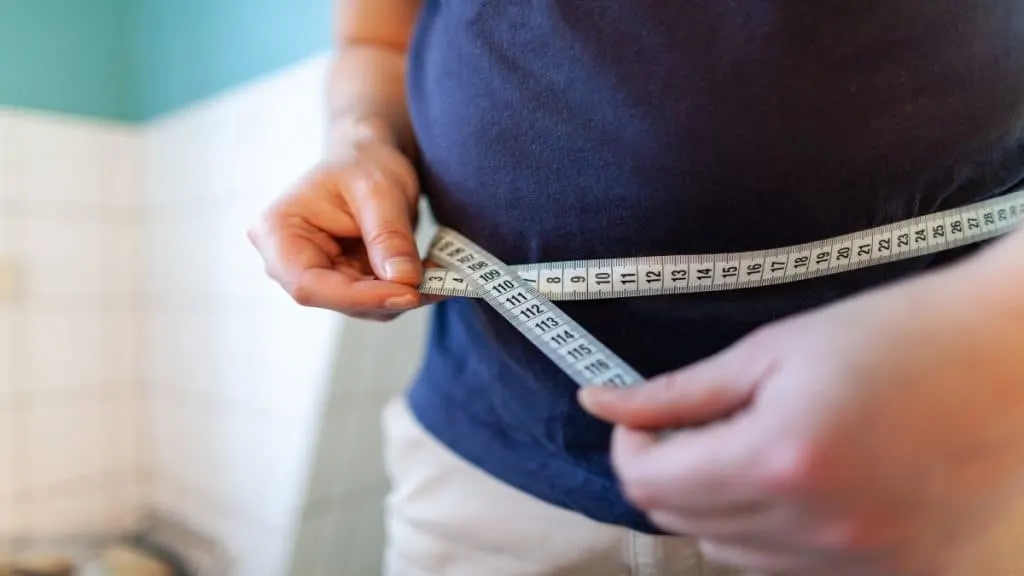
The average waist size for a teenage boy increases between the age of 13 and 19 as the boy goes through puberty, which causes him to increase in stature and gain both muscle mass and bone mass.
The regular waist size for a 13-year-old and 14-year-old boy is 31.6 inches.
The average waistline size for a 15-year-old teenage boy is 33.5 inches and just 32.2 inches for a 16-year-old boy.
A normal waist measurement for a 17-year-old boy is 33.7 inches, a figure which decreases slightly to 33.4 inches as a boy matures into a man and turns 18.
Teenage waist circumference peaks at 19 years of age for boys, where the average measurement is around 35.2 inches.
Waist circumference chart (women)

The average American waist size for a woman is lowest in the 20-29 age group at just 36.3 inches.
As you can see on the waist circumference chart above, this measurement increases by 5.5%—to 38.3 inches—as a woman reaches her 30s.
While women certainly have smaller waist sizes than men on average, both male and female waist size measurements peak at the same time, which is to say between the ages of 60 and 79.
As a woman reaches her 80s and her body weight naturally decreases, she will typically lose just over an inch from her waist.
Waist circumference chart (men)
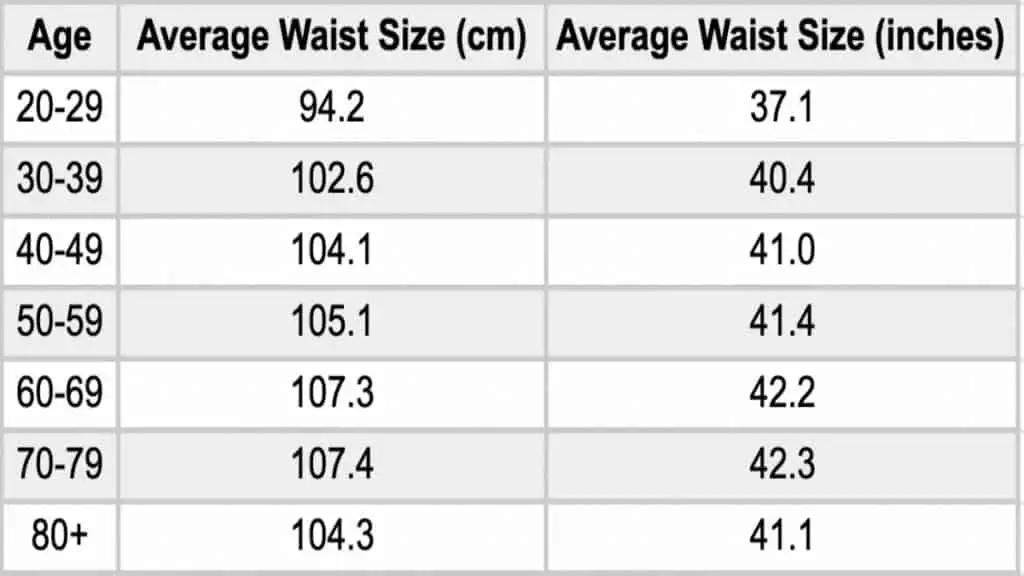
The average American male waist size peaks between the ages of 60 and 79. This may be due to age-related changes in body composition.
At an average measurement of 37.1 inches, men between the ages of 20 and 29 typically have relatively small waist sizes compared to their parents and grandparents.
As you can see on the waist size measurement chart above, as a man gets into his 30s, the average waist circumference measurement increases by nearly 9% to 40.4 inches.
The 3.3-inch increase from the 20s to 30s age group is the biggest percentage increase in the entire data set and may be due to a simple decline in physical fitness. [2]
Since both men and women typically experience their largest waistline increases at the same time, which is to say during their 30s, this is an area that future research should focus on.
Waist measurement chart (adolescent girls)
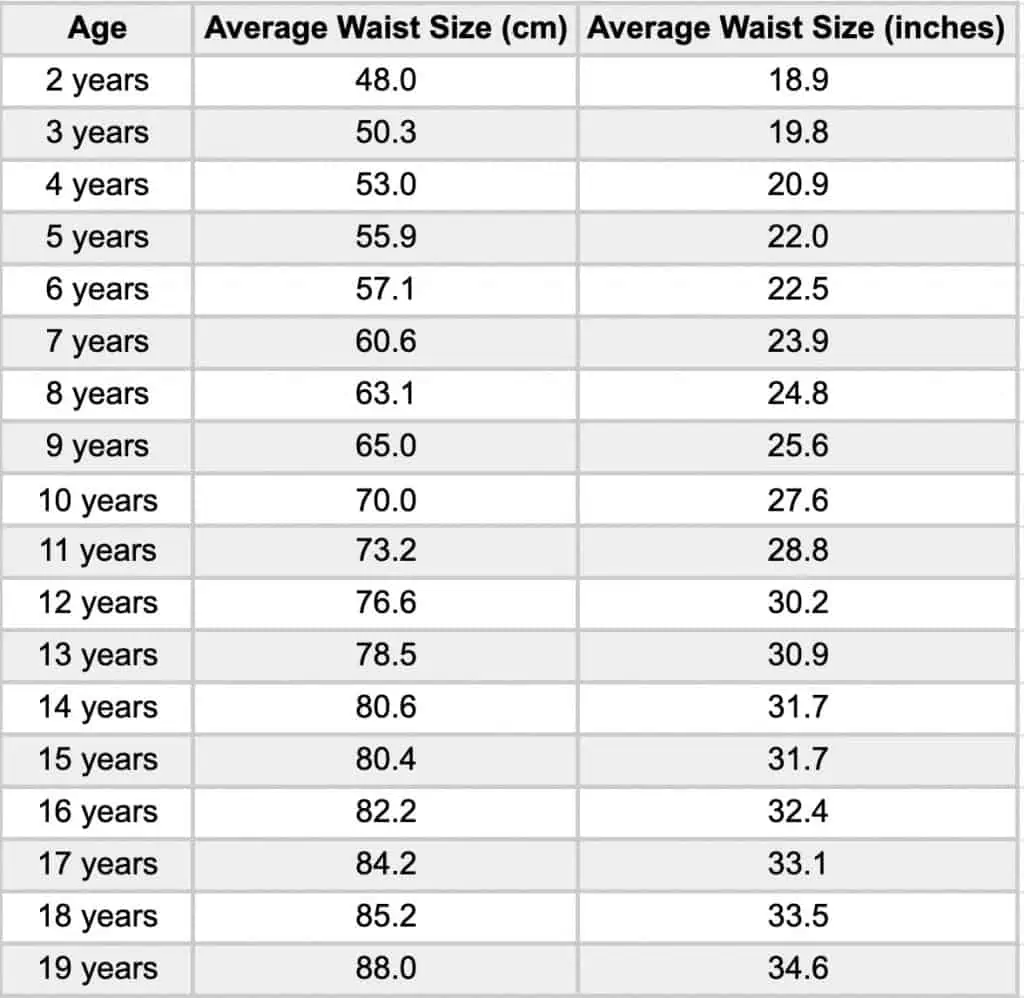
We’ve already revealed the average waist circumference for a teenage girl aged 13 through to 19.
But now, using the infant and young female waist size chart above, you can see the typical waist size increases that a girl can expect to experience as she goes through puberty.
This extensive data is particularly useful for health care practitioners and parents who want to see whether a particular girl (or group of girls) is developing at the expected rate for her age.
Waist measurement chart (adolescent boys)

Waist measurements for a boy increase steadily as he gets older. One of the biggest percentage increases in waistline size—6%—is observed between the ages of 14 and 15, which is when a boy is typically going through rapid development.
Interestingly, male and female children and adolescents have very similarly sized waistlines across most ages.
As you can see on the waistline measurement chart, in 6 of the 18 examined age groups, girls actually had a bigger waist measurement than boys. On 3 occasions, boys and girls had equal waist sizes on average, and 9 times boys had a bigger measurement.
Ideal waist circumference by height

It is commonly said that your waist circumference measurement should be no more than half of your height. To say it another way, your waist-to-height ratio should be no more than 0.5. [3]
Indeed, research from the esteemed PLOS ONE journal explains that since centralized fat storage (i.e., fat stored around your waist) is more harmful to health than having a high BMI, your waist-to-height ratio is a good predictor of your relative risk for various diseases. [4]
This value, however, is an upper limit and not the ideal waist size (though the 0.5 value can increase or decrease slightly depending on your body shape).
As for general recommendations, both the WHO and the American Heart Association note that there are certain upper waist size limits that men and women shouldn’t exceed.
According to the World Health Organization, a man’s waist should measure no more than 37 inches or 94 cm, irrespective of his height. [5]
According to the same report, the safe upper limit for a woman is 31.5 inches or 80 cm. Waist measurements beyond these values were associated with an increased risk of metabolic complications.
As noted by the American Heart Association, other research puts the figure at 40 inches for men and 35 inches for women. [6]
With these facts in mind, we will give a general at-a-glance-waist size recommendation for men and women of various heights.
Note that other bodily factors besides adiposity, such as your abdominal muscularity and bone mass, may impact your waist size.
What is a normal waist size for a 4′11″ woman?
A woman who is 4′11″, or 59 inches tall, should have a waist circumference that measures no more than 29.5 inches. This value is considerably below the low-risk upper limit of 31 inches, and so it appears unlikely that given a below-average height, a 4′11″ woman would suffer any problems if her waist was 30 inches, for example.
What is the ideal waist size for a 5′1″ woman?
The ideal waist size for a 5′1″ woman is 30.5 inches or less, which would put her in the low-risk category for conditions like heart disease and diabetes.
What is the ideal waist size for a 5′2″ woman?
The ideal waist size for a 5′2″ woman, or a lady who measures 62 inches, is 31 inches in circumference.
What is a normal waist circumference for a 5′3″ woman?
Based on American anthropometric data, a normal waist circumference for a 5′3″ woman is between 36 and 40 inches. However, even 36 inches isn’t a healthy waist size for women of that height.
Based on the gold standard 0.5 waist-to-height ratio, a healthy waist circumference for a 5′3″ woman is 31.5 inches or less, a value that would put her in the low-risk category for metabolic complications.
What is a good waist size for a 5′4″ woman?
A good waist size for a 5′4″ woman is anything less than 31.5 inches because this would mean that she’s at a low risk for things like diabetes and heart disease.
What is the ideal waist size for a 5′5″ woman?
A 5′5″ woman should have a waist circumference measurement of no more than 32 inches. However, for a woman in general, a low-risk healthy waist measurement is considered anything under 31.5 inches, so this is our recommendation.
What is the average waist size for a 5′6″ woman?
The average waist size for a 5′6″ woman depends on the age of the woman but is generally around 38-39 inches, which is well above the safe upper limit.
For a woman to be at a low risk of various metabolic morbidities, her waist circumference should not exceed 31.5 inches.
What is the ideal waistline measurement for a 5′7″ woman?
As mentioned, the ideal waistline measurement for a 5′7″ woman is 31.5 inches or less. Anything above this value is considered high risk.
It does, however, seem unlikely to the present writer that an inch in excess of the ideal measurement would pose a serious health threat, especially considering that your waist size can increase by that amount when your stomach is full.
What is a healthy waist circumference for a 5′8″ person?
Based on the 0.5 waist-to-height ratio, a 5′8″ person should have a waist circumference of no more than 34 inches. However, based on other data, this measurement would be considered relatively slim for a 5′8″ man but bigger than average for a 5′8″ woman.
What is a good waist size for a 5′9″ person?
The waist size for a 5′9″ person should not exceed 34.5 inches. This is because if your waist measurement is bigger, then it could be a sign that you have a central fat storage distribution and are thus at an increased risk of various morbidities.
What is the average waist size for a 5′10″ man?
The average waist size for a young 5′10″ man is 37 inches. When all ages are factored into the equation, the average male waist size is 40 inches.
The ideal male waist size for a man who stands 5′10″, however, is under 35 inches.
What is the average waist size for a 6 foot male?
We mentioned the average waist size for a man in general above. But since there is little data comparing waist size and height that contains 6 foot males, it’s difficult to figure out an average measurement.
The ideal male waist size for a 6 foot man, however, is less than 36 inches. Most men would consider anything under 34 inches to be “slim.”
What is considered a small waist?
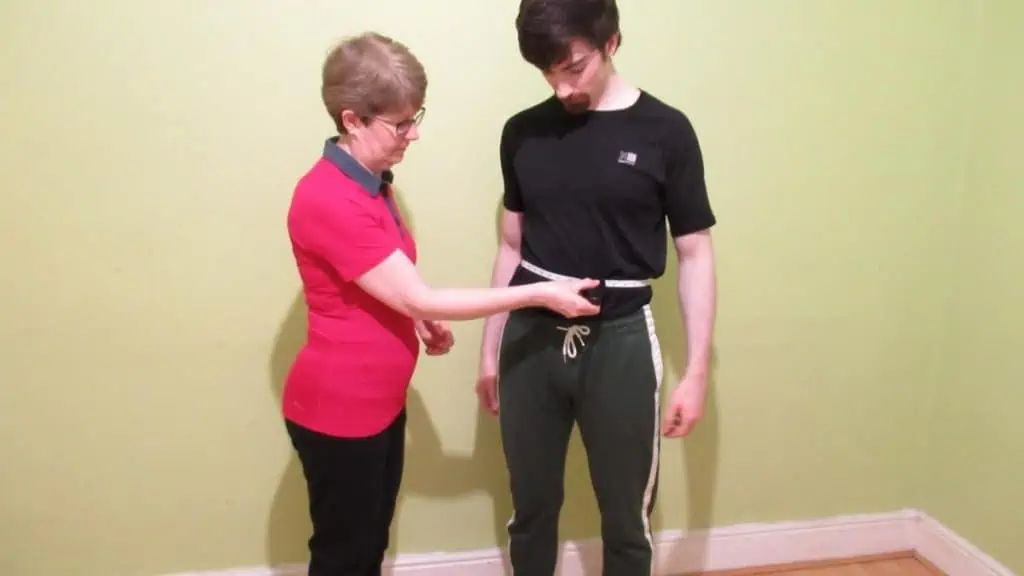
What is typically considered a small waist size? It depends on your gender, but in general, a 36-inch waist and below is considered small for men, whereas a 31-inch waist and below is considered slim for a woman.
Now, if we’re talking about what’s considered a small waist measurement among athletes and gym-goers, then the values will be slightly lower.
For a man who lifts weights, 34 inches is a medium waist, and anything sub 32 inches is pretty slim indeed. For a woman who works out, a 28-inch waist appears to be fairly small, though this measurement may be even smaller if the woman is young.
How to measure your waist circumference correctly
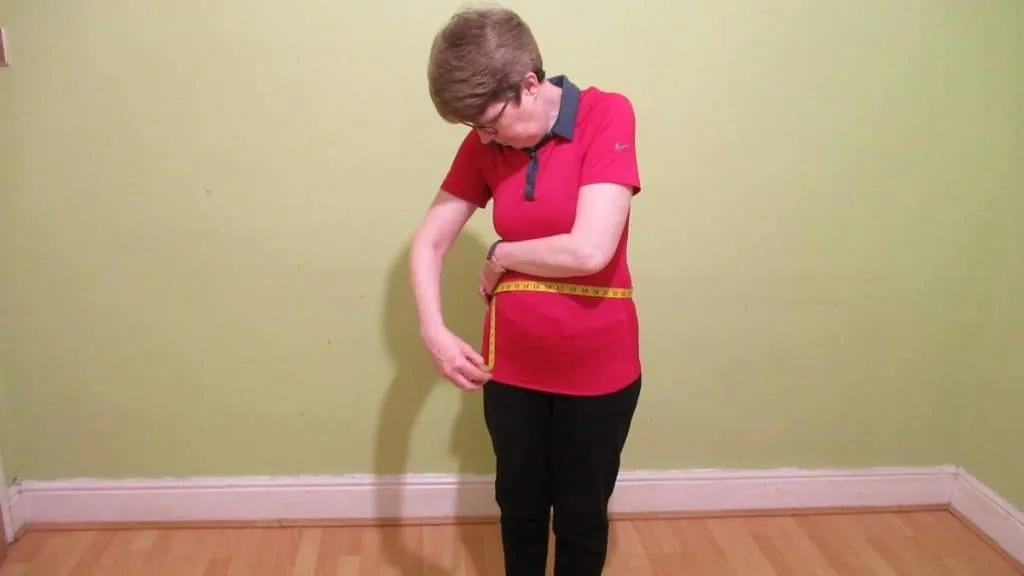
It’s crucial to understand how to measure your waist circumference correctly so that you don’t artificially inflate or decrease your measurement. For example, you shouldn’t suck your stomach in while you’re recording your waist size.
Also, don’t wear loose-fitting clothing when measuring your waist circumference. While there’s no need to have your stomach flesh visible (indeed, this might be inappropriate in certain settings), it’s a good idea to wear a sports top while taking your waist measurement so that your clothing doesn’t add to your circumference measurement.
- Stand up straight with a tape measure in one hand.
- Locate the top of your hip bone and the bottom of your rib cage using your fingers.
- Measure between these two points. In many cases, the belly button is a good guideline.
- Inhale and then exhale so that your stomach isn’t sucked in.
- Wrap the tape measure around your body and pull it snugly but not too tightly.
- Observe the number on the tape measure; the number where the two ends of the tape measure meet is your waist measurement.
- Take another 1-2 measurements to verify your reading.
Waist sizes FAQ
What is a healthy waist size for women?
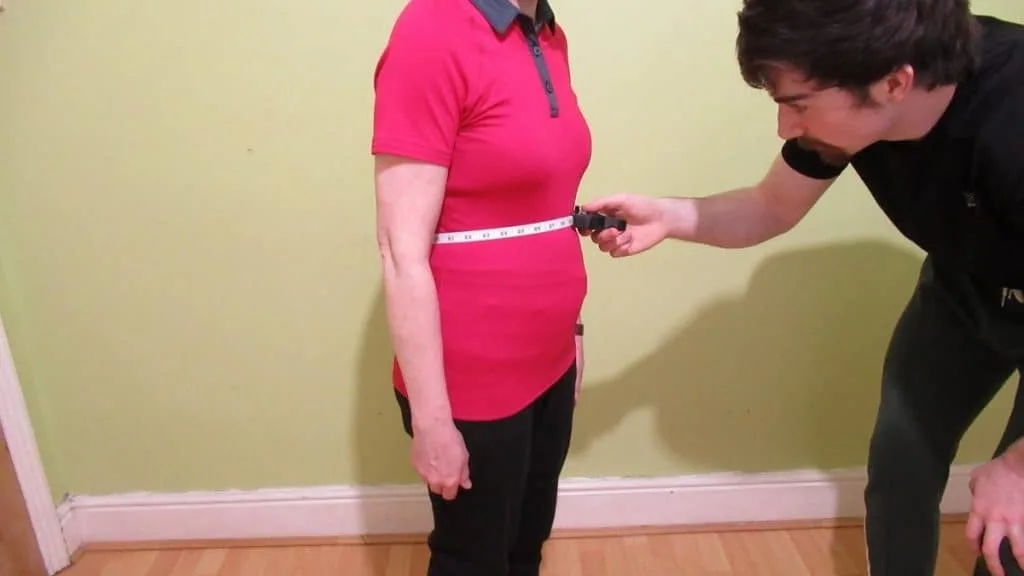
A healthy waist size for women is anything under 31.5 inches. At this size, a woman’s risk for conditions such as diabetes, heart disease, and high blood pressure is considered to be low.
If you’re a taller lady, however, then you may have more wiggle room because of your larger build.
Still, the 31.5-inch guideline is helpful for ensuring that your fat storage doesn’t become too centralized (it’s worse to store fat around your stomach than around your hips).
What is a healthy waist size for men?

A healthy waist size for men is considered to be 36 inches and below. If you’re shorter than average, however, then you should aim for a waist-to-height ratio of no more than 0.5. So if you’re 5′7″, for example, then your waist circumference should less than 33 inches.
Now, if you lift weights and train your abs, then you may have a thick waist without having a fat waist. In this case, it’s unlikely that your waist measurement would exceed 36 inches unless you’re really tall, so the male waist size guideline still stands for active individuals as well.
Is there such thing as a perfect waist size?

While there is no such thing as a perfect waist size in terms of a specific measurement, there is certainly such thing as an ideal range.
As mentioned, a woman’s waist size should not exceed 31.5 inches if she wants to stay as healthy as possible.
Conversely, a man should aim to keep his waist below 37 inches if he wants to minimize his risk of metabolic complications.
These numbers differ significantly for children and adolescents, and you can see the ideal values in the waist circumference charts above.
What is the average model waist size?

What is the average model waist size? According to modeling scout expert Vanessa Helmer, the average waist size for female fashion and catwalk models is 23 inches. [7] Of course, the average waist size for models heavily depends on what kind of modeling you’re doing.
After researching the stats of models on men’s clothing websites, it’s clear that the average male model waist size is around 32 inches. This number is similar, if slightly smaller, for fitness models, who’re generally shorter than male fashion models and also carry less body fat.
What is considered a large waist size?
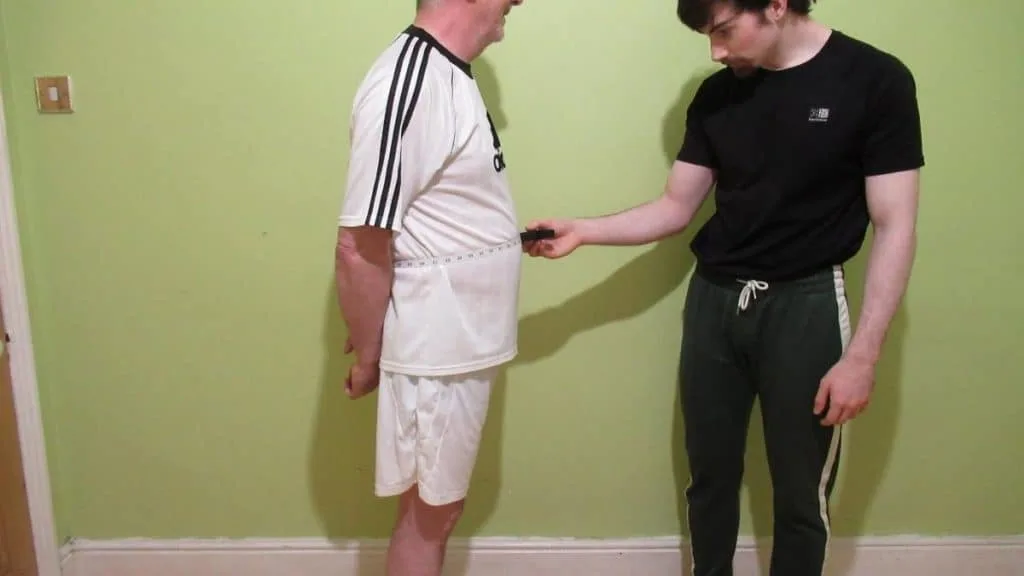
What is considered a large waist size for men and women?
If you’re a man and have a waist measurement greater than 37 inches, then you definitely have a large waist size. Anything over 40 inches is very large. All else being equal, the same measurement is worse at a shorter height.
For a woman, a large waist size is considered anything over 32 inches. Anything over 35 inches is very large for a woman.
How can you measure your waist without a tape measure?
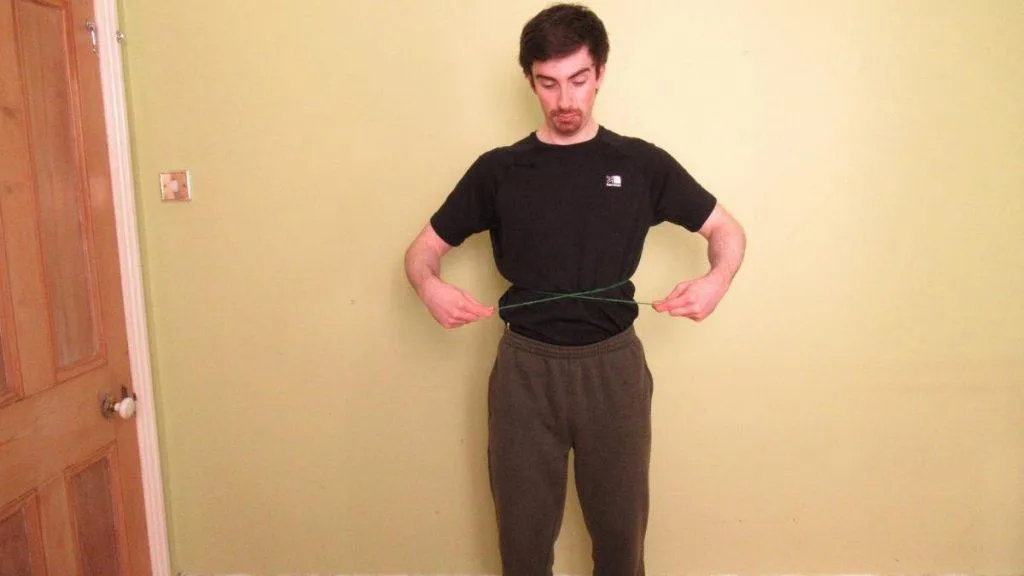
Here are a couple of ways to measure your waist if you don’t have a measuring tape.
My preferred method is to use a piece of string (or anything that resembles string) as this is most easy to wrap around your waist and will also yield the most accurate measurements.
All you do is wrap the string around your waist and then mark where the two ends overlap (which you can do with a pen). Then, using a ruler, you simply lay the string out and measure between the two points to get your approximate waist size.
If you don’t have a ruler, then you can use a dollar bill (both to measure between the two points on the string and to measure your waist itself) because we know that a dollar bill measures just over 6 inches.
How can you achieve a healthy waist circumference?

If you have a large waist size, then you’re at an increased risk of conditions such as heart disease and diabetes.
Reducing your waist circumference, in particular, is one of the most effective ways to improve your health because storing too much fat around your midsection, as we’ve previously shown, is actually very dangerous to your health.
Eating in an energy deficit, which means consuming fewer calories than your body burns, will lower your BMI and reduce all of your circumference measurements, including your waist.
You can get your body into an energy deficit by lowering your calorie intake and/or increasing your activity level.
Just be sure to set realistic targets so that you don’t get overwhelmed and binge on food or stop exercising. It’s much better to lose a modest amount of fat consistently than it is to shed a big chunk in the first few weeks but no more thereafter.
What is the average UK waist size?
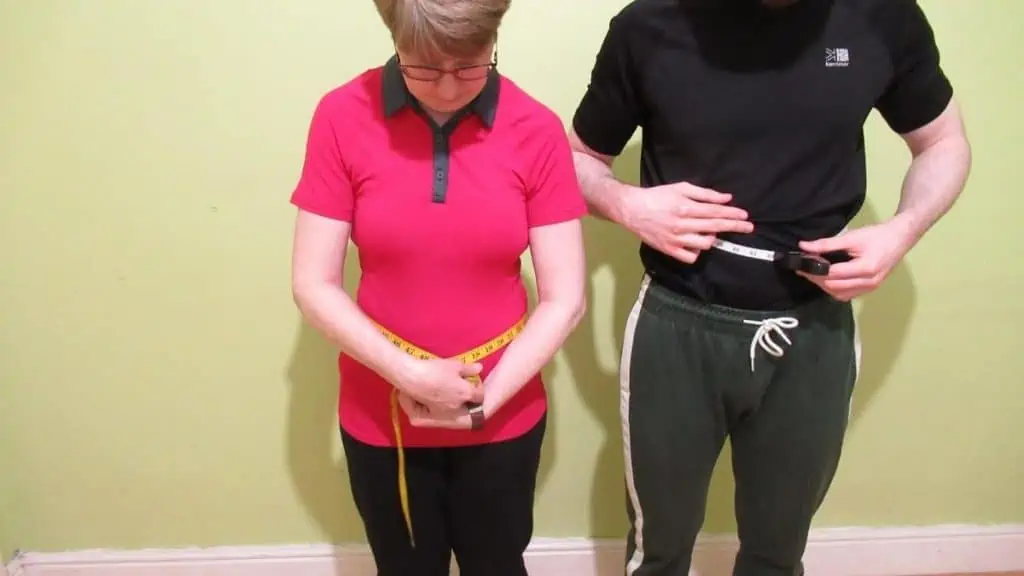
Based on the current data, the average UK waist size is 38 inches for men and 35 inches for women. While marginally smaller than American waist sizes, it’s clear that the average UK waist size is increasing and that Brits are getting more obese by the year.
Where can I learn more about waistline sizes?

If you want to learn more about waistline sizes and see how your waist measurement compares, then you can check out our other articles, which we’ve created for many of the most common waist sizes.
- 14 inch waist
- 15 inch waist
- 16 inch waist
- 17 inch waist
- 18 inch waist
- 19 inch waist
- 20 inch waist
- 21 inch waist
- 22 inch waist
- 23 inch waist
- 24 inch waist
- 25 inch waist
- 26 inch waist
- 27 inch waist
- 28 inch waist
- 29 inch waist
- 30 inch waist
- 31 inch waist
- 32 inch waist
- 33 inch waist
- 34 inch waist
- 35 inch waist
- 36 inch waist
- 37 inch waist
- 38 inch waist
- 40 inch waist
- 42 inch waist
- 50 inch waist
Conclusion: Do you have a normal waist size?

If there’s one key lesson to be learned from this article, it’s this: A normal waist circumference doesn’t equal a healthy waist circumference.
For example, at 38.7 inches, the average waist size for women is almost 8 inches larger than it should be.
For men, the average male waist circumference is nearly 4 inches bigger than it should be (although the present author isn’t entirely convinced that a 36 inch waist, for example, is healthy just because it’s under the 37-inch cut-off point).
References
- Fryar CD, Carroll MD, Gu Q, Afful J, Ogden CL. Anthropometric reference data for children and adults: United States, 2015–2018. National Center for Health Statistics. Vital Health Stat 3(46). 2021.
- Warner, J. (2005, July 25). Fitness Level Declines Dramatically With Age. WebMD. https://www.webmd.com/fitness-exercise/news/20050725/fitness-level-declines-dramatically-with-age
- Ashwell, M., & Gibson, S. (2014). A proposal for a primary screening tool: `Keep your waist circumference to less than half your height’. BMC Medicine, 12(1). https://doi.org/10.1186/s12916-014-0207-1
- Ashwell, M., Mayhew, L., Richardson, J., & Rickayzen, B. (2014). Waist-to-Height Ratio Is More Predictive of Years of Life Lost than Body Mass Index. PLoS ONE, 9(9), e103483. https://doi.org/10.1371/journal.pone.0103483
- World Health Organization. (2011, May). Waist circumference and waist–hip ratio: report of a WHO expert consultation, Geneva, 8–11 December 2008. https://www.who.int/publications/i/item/9789241501491
- American Heart Association News. (2018, February 28). Waist size predicts heart attacks better than BMI, especially in women. Www.Heart.Org. https://www.heart.org/en/news/2019/03/19/waist-size-predicts-heart-attacks-better-than-bmi-especially-in-women
- Helmer, V. (2019, November 20). Which Type of Female Model Are You? The Balance Careers. https://www.thebalancecareers.com/types-of-female-models-2379353

